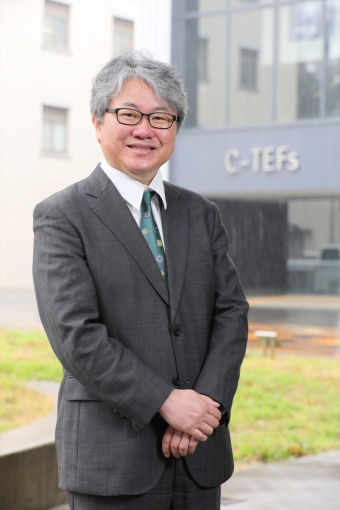
Date:
Location:
Title:
Understanding of point defects is essential to optimize crystal growth and device processes and design device structures as well as predict device characteristics. Compared to Si or GaAs, understanding as well as measurement techniques for point defects in GaN is halfway to go. One reason of the difficulty is the existence of dislocation. Dislocations are known to interact with point defects. In addition, dislocations also form deep levels in the bandgap. Last 10 years, we have focused on characterization of homoepitaxial GaN grown on low-threading-dislocation (low-TDD) high-quality GaN substrates to eliminate the effects of dislocations. We performed systematic studies on E3 (Ec0.6eV) and H1 (Ev+0.9eV) levels by using deep-level transient spectroscopy (DLTS) and revealed clear one-by-one quantitative correspondence to Fe and C impurity concentrations. There are extrinsic (impurity-originated) point defects.
Intrinsic point defects, such as vacancies, interstitials and their complexes, affect device characteristics as well. During device processes such as ion implantation and reactive etching, intrinsic defects are introduced. Identification and development of suppression methods are particularly important. We utilized intentional introduction of intrinsic defects by electron beam irradiation with an energy of >130 keV. Although scattering cross section is quite small, we can introduce Frenkel (vacancy-interstitial) pairs of N as well as Ga. Uniform defect formation in the depth direction can be possible due to the small cross section, which is very helpful for analysis. Thanks to mass difference between Ga and N, we can selectively introduce N vacancy-interstitial pairs by using low energy electron beam. The obtained DLTS spectra were very complicated, suggesting formation of various complex defects and reaction of defects during irradiation process. At this moment, we identified deep levels originating from N interstitial for both n-type and p-type GaN. Based on annealing behaviors, migration energy of the defect is obtained to be around 2.0 eV. Energy levels of deep levels and migration energy show fair agreements with the first-principle calculations.
Bio: Dr. Jun Suda is a Professor of Electronics at Nagoya University from 2017. He received the B.E. (1992), M.E. (1994) and Ph. D. (1997) degrees from Kyoto University. From 1992 to 1997, he worked on molecular-beam epitaxy (MBE) and structural and optical characterization of ZnMgSSe strained quantum well structures for short-wavelength optoelectronics. In 1997, he began research on group-III nitride semiconductors (III-N) and SiC as a Research Associate at Kyoto University. His research interests include optical/electrical/structural characterization of III-N and SiC materials, heteroepitaxial growth of III-N by MBE, functional integration of III-N and SiC materials, design and fabrication of SiC and GaN-based power devices as well as high-frequency devices. He is a Director of Transformative Energy Electronics Facilities (C-TEFs) at Nagoya University, a semiconductor clean room specially designed for nitride semiconductors. He has authored or co-authored over 300 publications in peer-reviewed journals and international conferences. Dr. Suda is a Fellow of the Japan Society of Applied Physics.
Hosted by Chris Van de Walle. Download event flyer.



